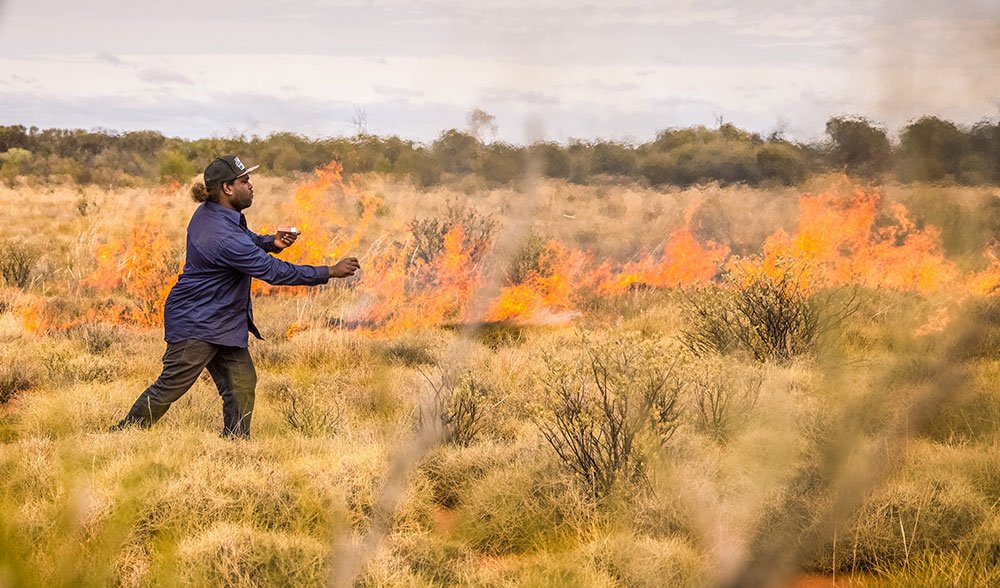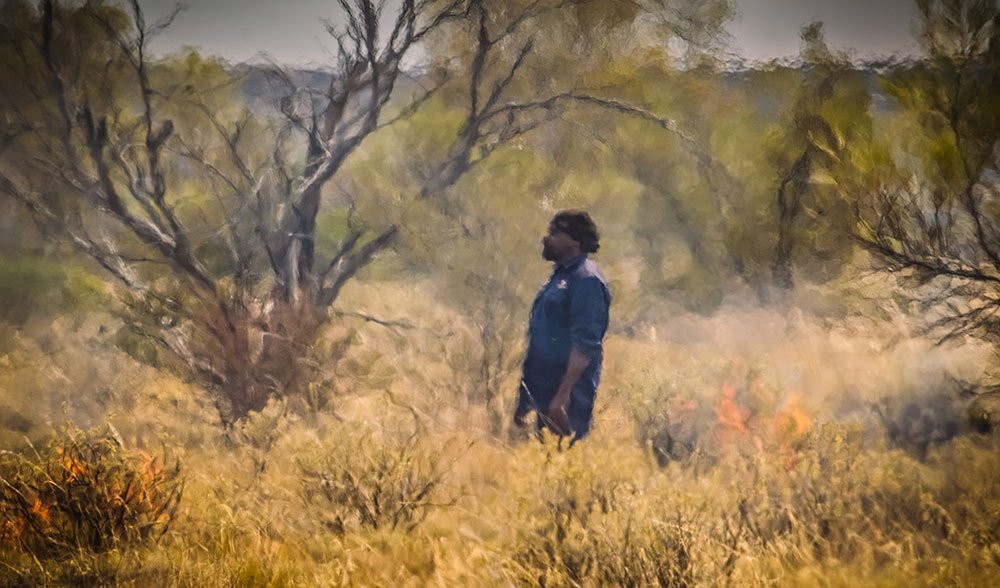Martu people preserve bilby population with traditional knowledge

ACROSS THE BIRRILIBURU landscape in remote Western Australia, the Martu people are using their knowledge as traditional owners to conserve the greater bilby (Macrotis lagotis) population, which continues to decline.

Aerial shot of the Birriliburu landscape, the traditional lands of the Martu people, which was recently hit by wildfire. (Photo credit: Annette Ruzicka)
The Martu people were some of the last Indigenous people to make contact with colonised Australia. Hidden by the arid central deserts of Western Australia, most Martu people didn’t meet western society until the 1950s and 1960s. In 2008, the Martu people were granted Native Title for over 6.6 million hectares of land, spanning from the Little Sandy Desert in the north to Wiluna in the south.
RELATED: The Martu people living the traditional Aboriginal life

Birriliburu Aboriginal rangers and Bush Heritage scientists work together on conservation efforts. (Photo credit: Annette Ruzicka)
Even after contact, no pastoral leases were established over the area, and development has been limited. As a result, the area is one of Australia’s last havens for both relatively unaltered Aboriginal traditions and threatened desert species, including the mulgara and marsupial mole, and greater bilby.
RELATED: The marsupial mole; an enduring enigma
Since 2013, the Martu people have managed the Birriliburu Indigenous Protected Area, a 6.6 million hectare site in partnership with Bush Heritage Australia. The area encompasses three bio-geographic regions; the Little Sandy Desert, the Gibson Desert and the Gascoyne.

Ranger Zareth performs ‘right way’ fire through a controlled burn. (Photo credit: Annette Ruzicka)
It’s a ‘two-way’ program, where the Martu people act as rangers, overseeing and implementing conservation efforts based off traditional customs.

Elder ranger Rita Cutter performing ‘right way’ fire burn. Patch burning is one way to prevent large-scale hot fires. (Photo credit: Annette Ruzicka)
Preventing large hot wildfire is a major duty, as rangers use their knowledge of the environment to trace fire scars and determine where to create preventive fires.

Ranger Grant Bingham inspects the movement of a controlled fire. (Photo credit: Annette Ruzicka)
Rangers also manage weeds, track the population of wildlife and feral animals, and work towards improving the quality of desert water sources.

Dr Vanessa Westcott and Elder Rita Cutter have developed a very special bond during their time on country and sharing knowledge. Rita has said she “finally feels as though someone is listening” to her as a traditional owner of the land. (Photo credit: Annette Ruzicka)
Not only does the ranger program help conserve the local environment, but by providing an employment opportunity that strengthens connection to country, it also preserves Martu tradition. There is a sense of urgency in passing on these traditions to future generations, as fewer and fewer people begin to know of life before colonial influence.

Rita Cutter shows the group how to make a Tjinabukka (sandal) with bark strips from the Mulkabrili (Crotalaria cunninghamii). Rita knows it is important that the younger rangers see how it is done so they can one day pass on the methods to the next generation. (Photo credit: Annette Ruzicka)
One way this knowledge is being preserved is through a bush tucker database. Birriliburu rangers including Rita Cutter work with Bush Heritage to document the traditional names and uses of the regional desert food and medicine plants for the first time.
Dr Westcott, Rita and many other rangers have gathered information about the names and uses of over 60 desert plant species together, and on each trip there is more to learn.
A major focus is tracking the greater bilby population, as the red sands of Katjarra in the south-west of Birriliburu are an ideal breeding habitat.

This salt lake is considered culturally significant to the Martu people, and the surrounds provide suitable bilby habitat. (Photo credit: Annette Ruzicka)
It’s estimated that population numbers have dropped to less than 10,000, with a disheartening 10 per cent decrease in the past 12 years. Using traditional tracking techniques, the Birriliburu rangers have been able to trace the growth of feral threats such as foxes and cats, as well as map bilby burrows and note any changes.

Old knowlege, new technology: Rita Cutter looks for fresh bilby burrows while Dr Vanessa Westcott trains ranger Debbie Wongawol how to map the burrows using GPS. (Photo credit: Annette Ruzicka)
Like the rest of the ranger program, it’s a step towards preserving something before it’s lost.




